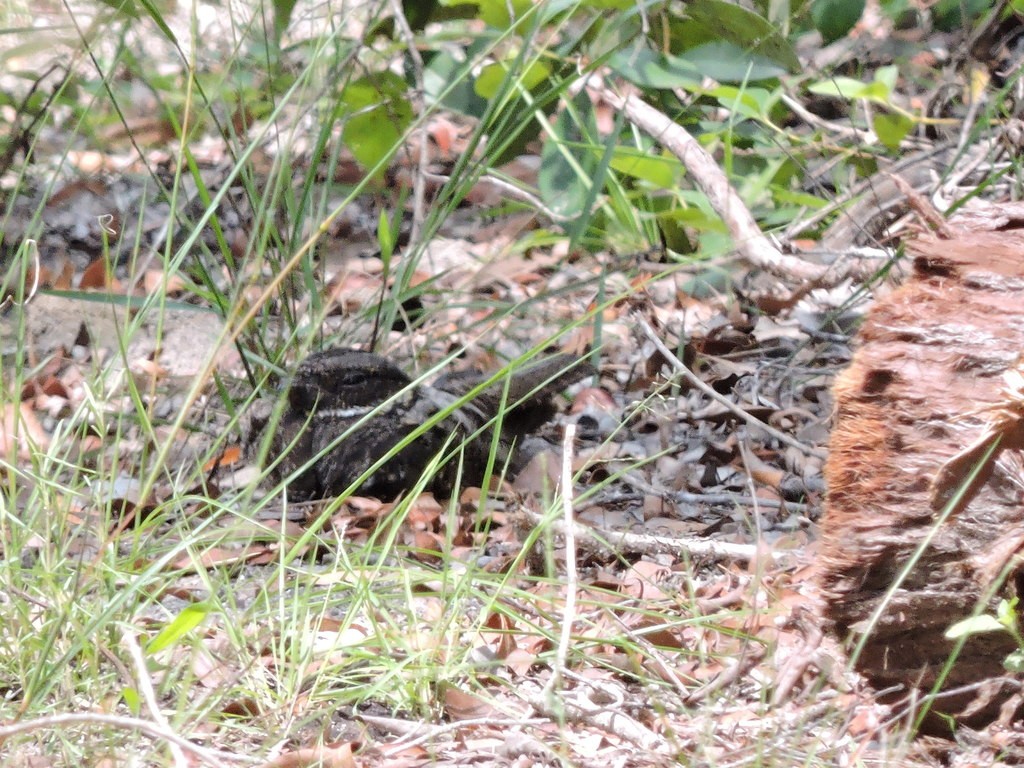White-throated Nightjar
A species of Australasian Eared Nightjars Scientific name : Eurostopodus mystacalis Genus : Australasian Eared Nightjars
White-throated Nightjar, A species of Australasian Eared Nightjars
Botanical name: Eurostopodus mystacalis
Genus: Australasian Eared Nightjars
Content
Description General Info
 Photo By christineheiser , used under CC-BY-NC-4.0 /Cropped and compressed from original
Photo By christineheiser , used under CC-BY-NC-4.0 /Cropped and compressed from original Description
E. mystacalis is the largest Australian nightjar species and measures around 30-37 cm. Males and females are very similar in appearance and display a dark variegated body. The upper body and wings are greyish-brown with broad blackish-brown streaks and spots. The underbody is spotted brown or greyish white and barred rufous. The upper part of the wing is greyish-white but speckled brownish-black as well. Its neck is buff colored with a large white patch on either side of its throat making it appear as if it’s wearing a collar. The four outermost primaries have a distinct white spot that help to differentiate it from similar looking nightjars.Its tail is brown with black speckles and absent of any white. The beak is greyish black and the legs are dark brown and short making travel on ground difficult for this bird. When in flight, the wings are long, pointed and held above its head. This species bounces buoyantly while flying and takes frequent glides accompanied by a double wing beat. 
Size
37 cm
Nest Placement
Ground
Feeding Habits
White-throated Nightjar is a nocturnal aerial hunter, foraging at night. Its diet mainly consists of insects like large moths, mantids, crickets, grasshoppers, beetles, and winged ants. White-throated Nightjar employs hawking techniques and may forage in groups, especially during migration to optimize night-time hunting.
Habitat
White-throated Nightjar predominantly inhabits various forested environments, notably eucalypt and dry sclerophyll forests, as well as woodlands. These birds favor regions with sparse understory, but they are also found in heathlands, sandy thickets, and scrublands. Their habitat extends to open, grassy areas and occasionally near mangroves. During non-breeding periods, white-throated Nightjar occupies diverse landscapes from forest edges to savannas and gardens in New Guinea.
Dite type
Insectivorous
General Info
Feeding Habits
Bird food type
Distribution Area
The white-throated nightjar is a species endemic to eastern Australia. Birds reside in northeast Australia throughout the year and travel to the south to breed. Specifically, their breeding range is in Australia east of the Great Dividing Range, New Caledonia, or the Solomon Islands. Birds are most abundantly found in New South Wales and Queensland. During the winter, birds migrate from February until April to Papua New Guinea as non-breeding visitors. Although most overwinter outside of Australia, there are birds that remain in north and central Queensland all year long. This species is able inhabit a wide variety of habitats but is most commonly found in dry low-elevation forests. They prefer to nest and roost in dry sclerophyll woodlands with sparse and discontinuous understory. Many individuals have been found to specifically live in woodlands that have experienced disturbances such as forest fires. In New South Wales, birds have been found inhabiting the edges of rainforests and mangroves. Those that winter in New Guinea occur in savannas, open grasslands, forest edges, marshlands and gardens. Wintering birds may also be found along the beaches of the Solomon islands. 
Species Status
Although E. mystacalis is currently listed as least concern, the trend in their overall population is decreasing. They are often traveling along the sides of roads at night searching for food resulting in fatal traffic collisions. Feral cats and dogs prey upon both adults and chicks. Fire ants (Wasmannia auropunctata) introduced in the 1970s have spread into E. mystacalis native range and threaten nestlings. Furthermore, increasing bushfires have affected large parts of the Melaleuca savanna, destroying habitable sites. The current estimate of individuals is unknown. 
Scientific Classification
Phylum
Chordates Class
Birds Order
Nightjars and Relatives Family
Nightjars and nighthawks Species
White-throated Nightjar